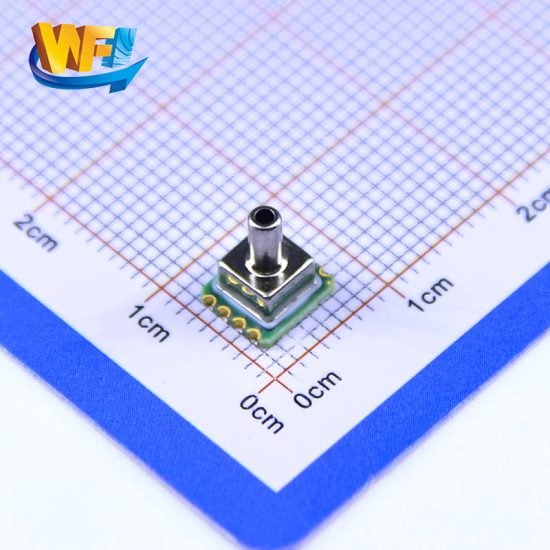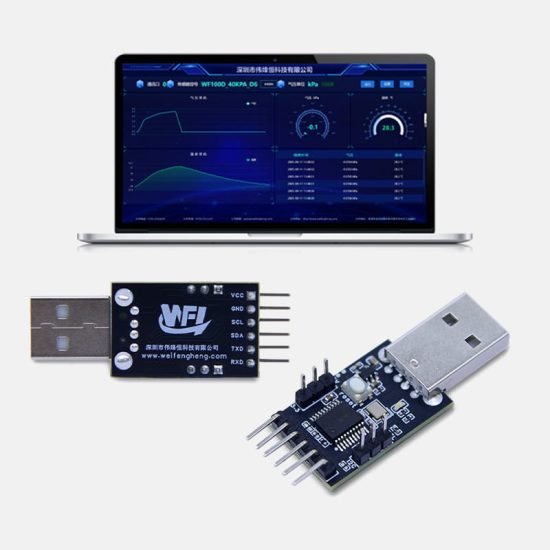Katalog
With MEMS technology advancement, temperature measurement in pressure sensor chips has become critical for ensuring device stability and accuracy. Temperature drift directly impacts sensor long-term reliability, while selecting appropriate temperature measurement methods can significantly improve overall system performance.
1. Integrated On-Chip Temperature Sensor Solution
Advantages of On-Chip Temperature Detection
Integrated temperature sensors directly embedded in MEMS chips achieve the most accurate temperature differential detection. This solution typically offers thermal sensitivity within 0.1°C, with measurement range covering industrial standard -40°C to 125°C. Chip-level integration eliminates external temperature measurement delays, enabling real-time temperature compensation algorithms. Startup stabilization time reduces to 5-10 seconds, improving response speed by 3-5 times compared to external solutions.
Temperature Compensation Algorithm Implementation
Integrated solutions support multi-point temperature compensation through preset temperature rise curve databases, accurately predicting pressure offset at different temperatures. Collected temperature data directly feeds compensation algorithms for millisecond-level real-time correction. This method maintains temperature consistency error within ±0.05°C, achieving 2-3 times better accuracy than external solutions.

2. External Temperature Sensor Configuration
Independent Temperature Monitoring System
External temperature sensors typically use thermistors or digital temperature chips installed near pressure sensors. This configuration offers maximum measurement range up to 200°C, suitable for extreme conditions. However, spatial distance and thermal conduction delays limit temperature differential detection accuracy, typically within ±0.5°C range.
Thermal Response Time Considerations
External solutions typically require 30-60 seconds thermal response time, potentially causing measurement lag in rapid temperature change environments. Temperature testing tools show external sensor temperature drift compensation effectiveness significantly decreases during high-frequency temperature changes, with errors potentially increasing to ±2°C.
3. Infrared Temperature Measurement Technology
Non-Contact Temperature Detection
Infrared temperature measurement monitors temperature through chip surface thermal radiation detection. This method suits high-temperature or difficult-to-access applications, with measurement accuracy within ±1°C range. Microscopic temperature imaging detection provides chip surface temperature distribution maps, helping identify hot spots and temperature gradients.
Application Limitation Analysis
Infrared measurement is significantly affected by environmental factors including humidity, dust, and surface emissivity changes. In precision measurement applications, this method’s accuracy and stability cannot meet high-precision pressure measurement requirements.
4. Temperature Modeling and Prediction Methods
Algorithm-Based Temperature Estimation
By analyzing pressure sensor electrical characteristic changes, temperature models can be established to indirectly estimate chip temperature. This method utilizes pressure-sensitive element temperature coefficient characteristics, calculating temperature through resistance or capacitance change measurements.
Machine Learning Optimization
Modern temperature modeling combines machine learning algorithms for adaptive temperature characteristics under different operating conditions. Through extensive historical data training, models can predict temperature change trends in complex environments, improving temperature compensation accuracy.

5. Hybrid Temperature Measurement Solutions
Multi-Sensor Fusion
Combining integrated and external temperature sensors through data fusion algorithms improves measurement accuracy and reliability. This solution enables mutual verification of measurement results, providing backup protection when single sensors fail.
Self-Calibration Mechanism
Hybrid solutions support automatic calibration functions, regularly comparing different sensor readings and automatically adjusting compensation parameters. This mechanism effectively reduces long-term drift while maintaining system temperature consistency.
Závěr
Based on comprehensive performance evaluation, integrated temperature sensor solutions demonstrate optimal performance in measurement accuracy, response speed, and compensation effectiveness, making them the most effective method for MEMS pressure sensor chip temperature measurement. Their 0.1°C thermal sensitivity and millisecond response time meet most industrial application requirements. For extreme temperature environments, hybrid measurement solutions are recommended, combining integrated sensor precision advantages with external sensor wide-range characteristics.
Výše uvedený úvod pouze poškrábe povrch aplikací technologie tlakových senzorů. Budeme pokračovat ve zkoumání různých typů senzorových prvků používaných v různých produktech, jejich fungování a jejich výhod a nevýhod. Pokud byste chtěli více podrobností o tom, o čem se zde diskutuje, můžete se podívat na související obsah později v této příručce. Pokud vás tlačí čas, můžete také kliknout sem a stáhnout si podrobnosti o těchto příručkách Data produktu PDF na tlak vzduchu.
Pro více informací o dalších senzorových technologiích prosím Navštivte naši stránku Sensors.
